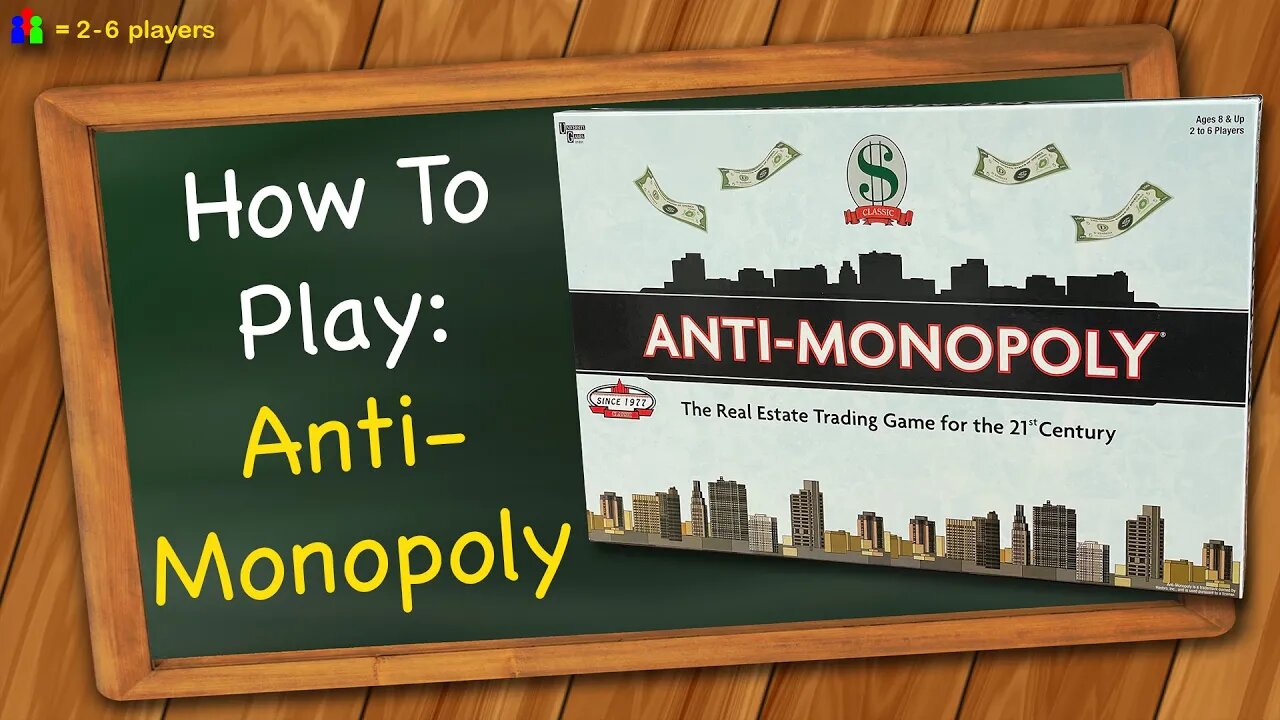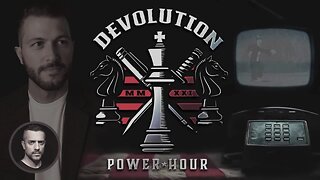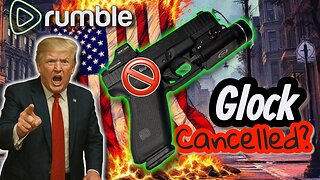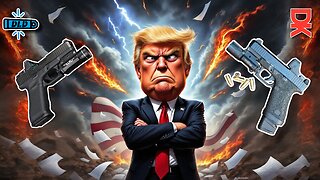Premium Only Content

How to play Anti-Monopoly
Learn the rules to the board game Anti-Monopoly quickly and concisely - This video has no distractions, just the rules.
Don't own the game? Buy it here:
amazon.com - https://amzn.to/3cVectv
amazon.ca - https://amzn.to/3oFgpeZ
amazon.uk - https://amzn.to/3BsuaWb
(As an Amazon Affiliate, I earn from qualifying purchases)
RULES:
Players have a choice of 2 ways of playing and winning the game. Option 1: the object is to bankrupt all the other players. Option 2: the object is to be the richest competitor after all monopolists have been eliminated; or to be the richest monopolist after all competitors have been eliminated.
Layout the board and shuffle the competitor and monopolists decks and place them face-down on their spots on the board. Pick on person to be the treasurer. The treasurer handles all the money, title cards, houses, and apartments. The treasurer must keep their own money separate from the treasury. Shuffle the competitor and monopolist decks and place them face-down on their spots on the board. To determine turn order, each player rolls dice and the player with the highest sum goes first, then play proceeds clockwise. Before play begins players must choose a role to either be a competitor or a monopolist, these picks are subject to role-balancing.
If there are an even number of players, then the total number of competitors and monopolists must be even. If there is an odd number of players, then the total number of competitors and monopolists must not differ by more than 1. Once you pick your role, it cannot be changed during the game.
Give each player two 500s and 50s, three 100s, seven 10s, and five 5s and 1s. In turn order each player picks a colored token, blue if you are a monopolist and green if you are a competitor. Place the tokens on start and the game begins. On your turn, roll both dice and move your token exactly that many spaces clockwise around the board. If you roll doubles, you take 1 extra turn, if you roll doubles on the extra turn then you do not take another turn.
When you land on an unowned street, transportation company, or utility you may purchase it from the treasury as indicated by the price on the space. If you do not wish to buy it, then nothing happens and it stays with the treasury. If you land on a space that another player owns, then you pay them the amount listed on the card based on their role and number of buildings the space has, if any. All other types of payment go to the treasury.
You may only build buildings on your turn. Competitors can build on any single property they own, while monopolists must wait until they have at least 2 properties in the same color before they can build buildings. If a monopolist owns 2 out of 3 properties for a city, and another player owns the 3rd one, then they may only charge the “no houses” price. Competitors may build like normal on a single property in a city when a monopolist owns the other 2.
To build, on your turn, pay the treasury the price indicated on the card then take an unused building from the treasury and place it on the space. Competitors place buildings on the name of the city while monopolists place their buildings on the M. Once a competitor has 4 houses, they may build an apartment by removing the 4 houses and buying an apartment. Monopolists, on the other hand only need to build 3 houses before they can get an apartment. You do not have to build evenly across streets, but once you build a building, you may not move it to another street. There is no limit to the number of buildings; so if the treasury runs out of building to use, use other objects, like paper, to represent more. [show paper image of house symbol]
If you need money, you can sell houses back to the treasury for half their initial cost. You can also mortgage title cards to receive half their value from the treasury by flipping the title card over. You cannot mortgage a property that has buildings on it and you do not collect rent from mortgaged properties. To unmortgage a property, pay the treasury the indicated price and flip the title card back over. Monopolists cannot have houses in a city if any of the 2 properties needed for the monopolization are mortgaged. A monopolist can only collect the lowest rent in those situations.
Players may trade properties, mortgaged properties, and/or money but not buildings. You must sell all buildings on a property before you can trade it. You are allowed to trade at any time except for the moment after dice have been rolled and a piece is being moved.
When you land on or pass the start space, collect $100 from the treasury. When moving around the first corner of the board you place your piece in the “sightseeing” space. This costs nothing and nothing special happens and you can move on like normal on your next turn....
-
 1:19
1:19
Triple S Games
1 year ago $0.03 earnedHow to play Chosen Chess
706 -
 10:34:09
10:34:09
Rallied
12 hours ago $17.99 earnedSolo Challenges ALL DAY
253K8 -
 1:39:43
1:39:43
Brandon Gentile
2 days agoTOP Money Expert: Bitcoin Will Keep Setting All-Time Highs Beyond $10m
9.27K -
 2:02:28
2:02:28
Badlands Media
1 day agoDevolution Power Hour Ep. 385: Trump “Death” Hoax, Supreme Court Tariffs Fight, and Tech-Military Ops
63.5K26 -
 1:56:48
1:56:48
Tundra Tactical
6 hours ago $12.40 earnedFull Semi-Auto Comedy Hour
31.7K2 -
 2:07:31
2:07:31
The Connect: With Johnny Mitchell
15 hours ago $7.70 earnedSecrets Of The Cocaine Cowboys: Miami Drug Lord Reveals Truth About His BILLION-DOLLAR Coke Empire
30.3K1 -
 1:55:52
1:55:52
BlackDiamondGunsandGear
1 day agoGlocks Want Gun Control? // Trump Tramples on your Rights? // After Hours Armory
29.9K3 -
 1:55:52
1:55:52
DLDAfterDark
10 hours ago $4.31 earnedDLD Live! Trump - Flag Burning - Glock & Gun Control - Martial Law Light?? - After Hours Armory
24.6K3 -
 13:46:18
13:46:18
GritsGG
17 hours agoRumble Customs! 3515 Ws! 🫡!
94.2K -
 5:59:47
5:59:47
SpartakusLIVE
12 hours agoThe HUGEST Brain (not forehead) delivers Saturday SPARTOONS || Variety Later - Shadow of Mordor
197K4